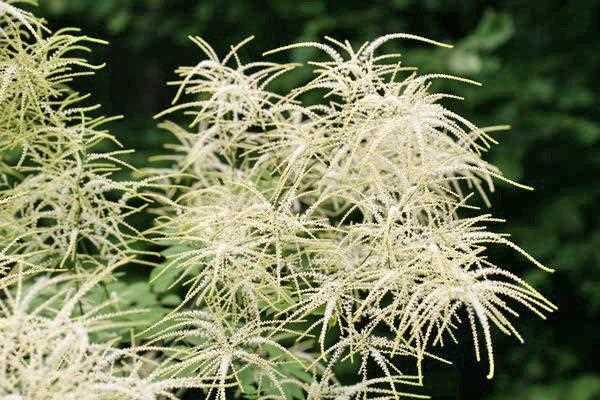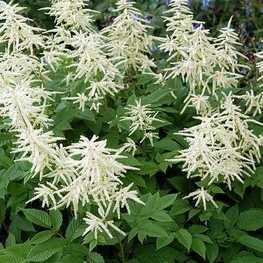- Choosing the Right Location for Planting Volzhanka
- Sunlight Requirements
- Soil Conditions
- Temperature and Climate
- Wind Protection
- Spacing
- Companion Plants
- Preparing the Soil for Volzhanka Plants
- 1. Choose a well-draining location
- 2. Test the soil
- 3. Amend the soil
- 4. Remove weeds and debris
- 5. Plan for spacing
- 6. Water the soil
- Planting Volzhanka: Step-by-Step Guide
- 1. Choose a suitable location
- 2. Prepare the soil
- 3. Dig the planting hole
- 4. Plant the Volzhanka
- 5. Mulch the area
- 6. Water and maintain
- 7. Provide support if needed
- Watering and Fertilizing Volzhanka Plants
- Watering
- Fertilizing
- Pruning and Maintenance of Volzhanka Plants
- 1. Pruning:
- 2. Maintenance:
- Common Pests and Diseases Affecting Volzhanka
- Pests
- Diseases
- Tips for Successful Propagation of Volzhanka Plants
- 1. Propagation by Seeds
- 2. Propagation by Cuttings
- 3. Division
- Questions and Answers:
- How do I plant a Volzhanka plant?
- What kind of soil does a Volzhanka plant need?
- How often should I water a Volzhanka plant?
- Can a Volzhanka plant tolerate full sun?
- How do I propagate a Volzhanka plant?
- Videos: HOW to PLANT and GROW HOLLYHOCKS plus TIPS for growing hollyhocks in HOT CLIMATES

If you’re looking to add a touch of exotic beauty to your garden, the Volzhanka plant is an excellent choice. Also known as the Russian Iris, this stunning perennial is native to the Volga River region in Russia. With its vibrant purple-blue flowers and striking foliage, the Volzhanka is sure to be a showstopper in any garden.
Planting and caring for Volzhanka plants is relatively straightforward, but there are a few key tips to keep in mind to ensure their successful growth. Firstly, it’s important to choose a location with well-drained soil and full sun or partial shade. The Volzhanka can tolerate a wide range of soil conditions, but it thrives best in moist, fertile soil.
When planting Volzhanka, make sure to space the plants about 12-18 inches apart to allow for adequate air circulation. Dig a hole that is slightly larger than the root ball of the plant, and place the Volzhanka in the hole, making sure that the crown is level with the soil surface. Backfill the hole with soil, gently firming it around the plant to eliminate any air pockets.
Once planted, regular watering is essential during the first year to help establish the root system of the Volzhanka. Afterward, the plant is relatively drought-tolerant and only needs watering during prolonged dry periods. Adding a layer of organic mulch around the base of the Volzhanka can help retain moisture and suppress weed growth.
Tip: To encourage the Volzhanka to produce more blooms, it’s essential to deadhead the faded flowers regularly. This will divert the plant’s energy towards producing new blooms instead of seed production.
In terms of maintenance, the Volzhanka is a relatively low-maintenance plant. However, it is a good idea to divide the plant every two to three years to ensure its continued vigor and prevent overcrowding. The best time to divide the Volzhanka is in early spring or late summer when the plant is dormant.
With proper care and attention, the Volzhanka plant can thrive and provide a stunning display of color in your garden year after year. Its unique beauty and adaptability make it a favorite among gardeners looking to add a touch of elegance to their outdoor spaces.
Choosing the Right Location for Planting Volzhanka
When it comes to planting Volzhanka plants, selecting the right location is crucial for their growth and development. Here are some important factors to consider:
Sunlight Requirements
Volzhanka plants thrive in full sun to partial shade. It is important to choose a location that receives at least 6 hours of direct sunlight each day for optimal growth. If you live in a region with hot summers, partial shade during the hottest part of the day can help protect the leaves from sunburn.
Soil Conditions
Volzhanka plants prefer moist, well-draining soil. Avoid planting them in areas with heavy clay soil or in locations that are prone to standing water. The ideal soil pH for Volzhanka is slightly acidic to neutral (pH 6.0-7.0). If your soil is too alkaline, you can amend it with compost or peat moss to lower the pH.
Temperature and Climate
Volzhanka plants are hardy in USDA zones 4-9. They can tolerate cold temperatures but are not suited for extreme heat. If you live in a region with hot summers, choose a location that provides some shade or plant them where they will receive indirect sunlight during the hottest part of the day.
Wind Protection
Volzhanka plants have delicate foliage, and strong winds can cause damage. Consider planting them in a location that is protected from strong winds, such as near a fence, wall, or other structures that can provide some shelter.
Spacing


When planting Volzhanka, make sure to provide enough space between each plant. They can grow up to 3-4 feet in height and spread, so allowing sufficient space will prevent overcrowding and promote good air circulation.
Companion Plants


Volzhanka plants can be planted alongside other shade-loving perennials or shrubs such as hostas, ferns, or astilbes. These plants can provide additional shade and create an attractive garden bed with contrasting textures and colors.
| Summary | |
|---|---|
| Sunlight: | Full sun to partial shade |
| Soil: | Moist, well-draining, slightly acidic to neutral (pH 6.0-7.0) |
| Temperature: | Hardy in USDA zones 4-9, avoid extreme heat |
| Wind: | Plant in a protected location |
| Spacing: | Provide enough space for growth |
| Companion Plants: | Hostas, ferns, astilbes |
By considering these factors and selecting the right location for planting Volzhanka, you can ensure healthy and thriving plants in your garden.
Preparing the Soil for Volzhanka Plants


Proper soil preparation is essential for the successful growth of Volzhanka plants. Taking the time to prepare the soil correctly will provide an optimal environment for the plants to thrive and produce beautiful blooms. Here are some steps to follow when preparing the soil:
1. Choose a well-draining location
Volzhanka plants prefer soil that is well-draining to prevent the roots from becoming waterlogged. Choose a location in your garden that has good drainage or consider planting the Volzhanka in raised beds or containers with drainage holes.
2. Test the soil
Before planting, it’s a good idea to test the soil to determine its pH level and nutrient content. Volzhanka plants prefer slightly acidic to neutral soil with a pH level between 6.0 and 7.0. Testing the soil will also help you identify any deficiencies or imbalances that need to be addressed.
3. Amend the soil
If the soil is not ideal for Volzhanka plants, you can amend it to improve its texture and fertility. Mix in organic matter such as compost, well-rotted manure, or peat moss to improve drainage and add nutrients to the soil. Work the amendments into the soil to a depth of about 6-8 inches.
4. Remove weeds and debris
Before planting the Volzhanka, remove any weeds, rocks, or debris from the soil. Weeds can compete with the plants for nutrients and water, so it’s important to clear the area before planting.
5. Plan for spacing
Give each Volzhanka plant enough space to grow and spread out. The exact spacing will depend on the variety, so refer to the plant’s label or consult a gardening guide for specific recommendations. Proper spacing will allow air circulation and help prevent diseases.
6. Water the soil
After preparing the soil, give it a good watering to ensure it is moist but not waterlogged. This will help settle the soil and provide a good start for the Volzhanka plants.
Following these steps will help you prepare the soil for Volzhanka plants and create an ideal growing environment. With proper soil preparation and care, your Volzhanka plants will thrive and reward you with their beautiful flowers.
Planting Volzhanka: Step-by-Step Guide
Planting Volzhanka is a relatively simple process, but it’s important to follow these step-by-step instructions to ensure that your plant has the best chance of thriving.
1. Choose a suitable location
First, select a location for your Volzhanka plant that receives partial shade to full sun. Volzhanka plants prefer moist soil, so choose an area that drains well but retains some moisture.
2. Prepare the soil
Before planting, prepare the soil by removing any weeds or debris and loosening it with a garden fork or tiller. Volzhanka plants thrive in nutrient-rich soil, so consider adding compost or organic matter to improve soil fertility.
3. Dig the planting hole
Dig a hole that is slightly larger and deeper than the root ball of your Volzhanka plant. The hole should accommodate the roots comfortably and allow for future growth.
4. Plant the Volzhanka
Place the plant in the planting hole, ensuring that the top of the root ball is level with or slightly above the soil surface. Backfill the hole with soil, gently firming it around the roots to remove any air pockets. Water the plant thoroughly after planting to settle the soil.
5. Mulch the area
Apply a layer of mulch around the base of the Volzhanka plant, taking care not to mulch directly against the stem. Mulch helps retain moisture, suppresses weeds, and protects the roots from extreme temperatures.
6. Water and maintain
Regularly water the Volzhanka plant to keep the soil consistently moist but not waterlogged. Avoid overwatering, as this can lead to root rot. Prune any dead or damaged branches to encourage new growth and shape the plant as desired.
7. Provide support if needed
If your Volzhanka plant grows tall and starts to lean or sprawl, provide support with stakes or a trellis. This will help keep the plant upright and prevent it from bending or breaking under its own weight.
Following these step-by-step instructions will help ensure that your Volzhanka plant gets off to a healthy start and continues to thrive in your garden. With proper care and attention, your Volzhanka will reward you with beautiful foliage and blooms for years to come.
Watering and Fertilizing Volzhanka Plants
Proper watering and fertilizing are crucial for the health and growth of Volzhanka plants. This section will provide you with some essential tips on how to water and fertilize your Volzhanka plants effectively.
Watering
Volzhanka plants require regular and consistent watering to thrive. Here are some guidelines to follow:
- Water your Volzhanka plants thoroughly, ensuring the soil is evenly moist. Avoid overwatering, as it can lead to root rot.
- Check the moisture level of the soil by sticking your finger about an inch deep into the soil. If it feels dry, it’s time to water the plant.
- Water the plant at the base to avoid wetting the leaves. Wet foliage can lead to fungal diseases.
- During the growing season (spring and summer), water your Volzhanka plant more frequently. As the plant enters its dormancy period (fall and winter), reduce the watering frequency.
- Consider using a moisture meter to accurately determine when your Volzhanka plants need watering.
Fertilizing
Volzhanka plants benefit from regular fertilization to promote healthy growth. Here are some tips for fertilizing your Volzhanka plants:
- Use a balanced, water-soluble fertilizer with an NPK ratio of 20-20-20 or similar. Dilute the fertilizer according to the instructions provided.
- Apply the fertilizer every two to four weeks during the growing season. Reduce the frequency to once a month during the dormancy period.
- Avoid applying fertilizer to dry soil. Water your Volzhanka plant before applying fertilizer for better absorption.
- Apply the fertilizer to the soil around the base of the plant, avoiding direct contact with the leaves.
- Monitor the plant’s response to the fertilizer. If you notice signs of fertilizer burn or excessive growth, reduce the amount or frequency of fertilization.
Remember to read and follow the instructions provided by the fertilizer manufacturer for the best results. Additionally, it’s important to observe your Volzhanka plants closely and make adjustments to the watering and fertilizing routine based on their individual needs.
Pruning and Maintenance of Volzhanka Plants
Proper pruning and maintenance are essential for the health and aesthetics of Volzhanka plants. Here are some tips to help you with the pruning and maintenance of your Volzhanka plants:
1. Pruning:
- Regularly prune the Volzhanka plants to maintain their shape and prevent them from becoming overgrown.
- Prune any dead, diseased, or damaged leaves and branches. This will help improve the overall health of the plant and prevent the spread of diseases.
- Use clean and sharp pruning tools to make clean cuts and minimize damage to the plant.
- Remove any suckers or side shoots that may be growing from the base of the plant. These can divert energy from the main plant and affect its growth.
- Trim back any excessively long or straggly branches to promote a bushier and more compact growth habit.
2. Maintenance:
- Water the Volzhanka plants regularly, keeping the soil evenly moist but not waterlogged. Avoid overwatering, as it can lead to root rot.
- Fertilize the plants during the growing season with a balanced, water-soluble fertilizer to provide them with the necessary nutrients for healthy growth.
- Monitor the plants for any signs of pests or diseases, such as aphids or powdery mildew. Treat any infestations or infections promptly to prevent them from spreading.
- Keep an eye on the overall appearance of the plants and remove any yellowing or brown leaves or flowers to maintain a tidy and attractive appearance.
- Consider staking or providing support to the Volzhanka plants if they are growing too tall or leaning excessively.
By following these pruning and maintenance tips, you can ensure that your Volzhanka plants thrive and continue to add beauty to your garden or indoor space.
Common Pests and Diseases Affecting Volzhanka
Just like any other plant, Volzhanka is also susceptible to various pests and diseases. Being aware of these common problems and taking preventive measures can help ensure the healthy growth and development of your Volzhanka plants.
Pests
- Aphids: These tiny insects feed on the sap of the Volzhanka plant, causing stunted growth and distorted leaves. Regularly inspect your plants and use insecticidal soap or neem oil to control aphids.
- Spider Mites: These microscopic pests can cause yellowing of leaves, visible webbing, and overall decline of the plant. Keeping the humidity high and regularly spraying the plants with water can help prevent spider mite infestations. If needed, use an insecticidal soap or miticide.
- Thrips: Thrips feed on the leaves of Volzhanka plants, causing silver or bronze speckles on the foliage. Regularly inspect your plants and use insecticidal soap to control thrips.
- Caterpillars: Caterpillars can chew on the leaves of the Volzhanka plant, causing significant damage. Handpicking the caterpillars or using organic insecticides can help control their population.
- Slugs and Snails: These mollusks can feed on the leaves and stems of Volzhanka plants, leaving irregular holes and slime trails. Use barriers such as copper tape or beer traps to control slugs and snails.
Diseases
- Powdery Mildew: Powdery mildew is a fungal disease that appears as white powdery spots on the leaves. Ensure good air circulation, avoid overhead watering, and use fungicides as needed to control powdery mildew.
- Root Rot: Over-watering and poorly draining soil can lead to root rot in Volzhanka plants. Avoid over-watering, ensure proper drainage, and remove affected plants to prevent the spread of the disease.
- Leaf Spot: Leaf spot is a fungal disease that causes black or brown spots on the leaves. Remove infected leaves and use a fungicide to prevent the spread of the disease.
Regularly inspecting your Volzhanka plants and taking prompt action against pests and diseases can help maintain their health and ensure their longevity. By providing the right conditions and care, you can enjoy the beauty of your Volzhanka plants for years to come.
Tips for Successful Propagation of Volzhanka Plants
Volzhanka plants, also known as Russian sage, are beautiful ornamental plants that can be easily propagated through various methods. Here are some useful tips to ensure successful propagation of Volzhanka plants:
1. Propagation by Seeds
One of the easiest ways to propagate Volzhanka plants is by collecting and sowing their seeds. Follow these steps:
- Collect mature seeds from the Volzhanka plant after the flowers have dried and turned brown.
- Remove the seeds from the flower spikes and separate them from the chaff.
- Fill a seed tray or small pots with well-draining soil mix.
- Sow the seeds on the soil surface and lightly press them with your finger.
- Mist the soil surface with water to keep it moist.
- Place the seed tray or pots in a warm and bright location, but away from direct sunlight.
- Keep the soil consistently moist until the seeds germinate, which usually takes about 2-4 weeks.
2. Propagation by Cuttings
Another common method of propagating Volzhanka plants is through stem cuttings. Here’s how to do it:
- Select healthy and disease-free stems from the parent plant.
- Using a sharp and clean pair of pruning shears, take 4-6 inch long cuttings from the tips of the stems.
- Remove the lower leaves from the cuttings, leaving only a few leaves on the tip.
- Dip the cut end of each cutting in rooting hormone powder to promote root growth.
- Insert the cuttings about 2 inches deep into a pot filled with well-draining soil.
- Water the soil lightly to settle it around the cuttings.
- Place the pot in a warm location with indirect sunlight.
- Mist the cuttings regularly and keep the soil evenly moist until roots develop, usually within 4-6 weeks.
3. Division
Volzhanka plants can also be propagated through division, especially when the plant is becoming overcrowded. Here’s how to do it:
- Carefully dig up the established Volzhanka plant from the ground using a garden fork or shovel.
- Shake off any excess soil from the plant to expose its roots.
- Using a sharp and clean tool, separate the plant into several smaller clumps by dividing the root ball.
- Each clump should have its own set of roots and stems.
- Replant the divided clumps in prepared holes in the garden or in individual pots.
- Water the newly planted divisions thoroughly and keep the soil consistently moist until they establish.
By following these tips, you can easily propagate Volzhanka plants and enjoy their beautiful foliage and delicate flowers in your garden or as indoor houseplants.
Questions and Answers:
How do I plant a Volzhanka plant?
To plant a Volzhanka plant, start by preparing a well-drained soil mix in a pot or garden bed. Dig a hole or create a planting pocket, then remove the plant from its container and gently loosen the roots. Place the plant in the hole or pocket, ensuring that the top of the root ball is level with the soil surface. Fill in the remaining space with soil and lightly compact it. Water the newly planted Volzhanka thoroughly and continue to water regularly as needed.
What kind of soil does a Volzhanka plant need?
A Volzhanka plant prefers a well-drained soil mixture that is rich in organic matter. It should be loose and provide good aeration to the roots. A mixture of potting soil, perlite, and peat moss can be suitable for growing Volzhanka plants. It is important to ensure the soil does not hold excess water, as this can cause root rot.
How often should I water a Volzhanka plant?
Volzhanka plants prefer moderately moist soil, so you should water them whenever the top inch of soil feels dry to the touch. Water thoroughly, allowing the excess to drain away. Avoid overwatering, as this can lead to root rot. In winter, when the plant is in its resting period, you can reduce the frequency of watering.
Can a Volzhanka plant tolerate full sun?
Volzhanka plants prefer bright, indirect light but can tolerate some morning or evening sun. However, intense and direct sunlight for prolonged periods can scorch the leaves. It is best to provide them with filtered or diffused light to prevent any damage.
How do I propagate a Volzhanka plant?
There are a few methods for propagating a Volzhanka plant. One common method is by stem cuttings. Take a cutting about 4-6 inches long from a healthy, mature plant, making sure it has several nodes. Remove the lower leaves, dip the cut end in a rooting hormone powder, and insert it into a well-draining rooting medium. Keep the cuttings in a warm and humid environment until roots develop. Another method is by division, where you carefully divide the plant into smaller sections, making sure each section has roots attached.







